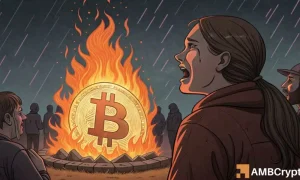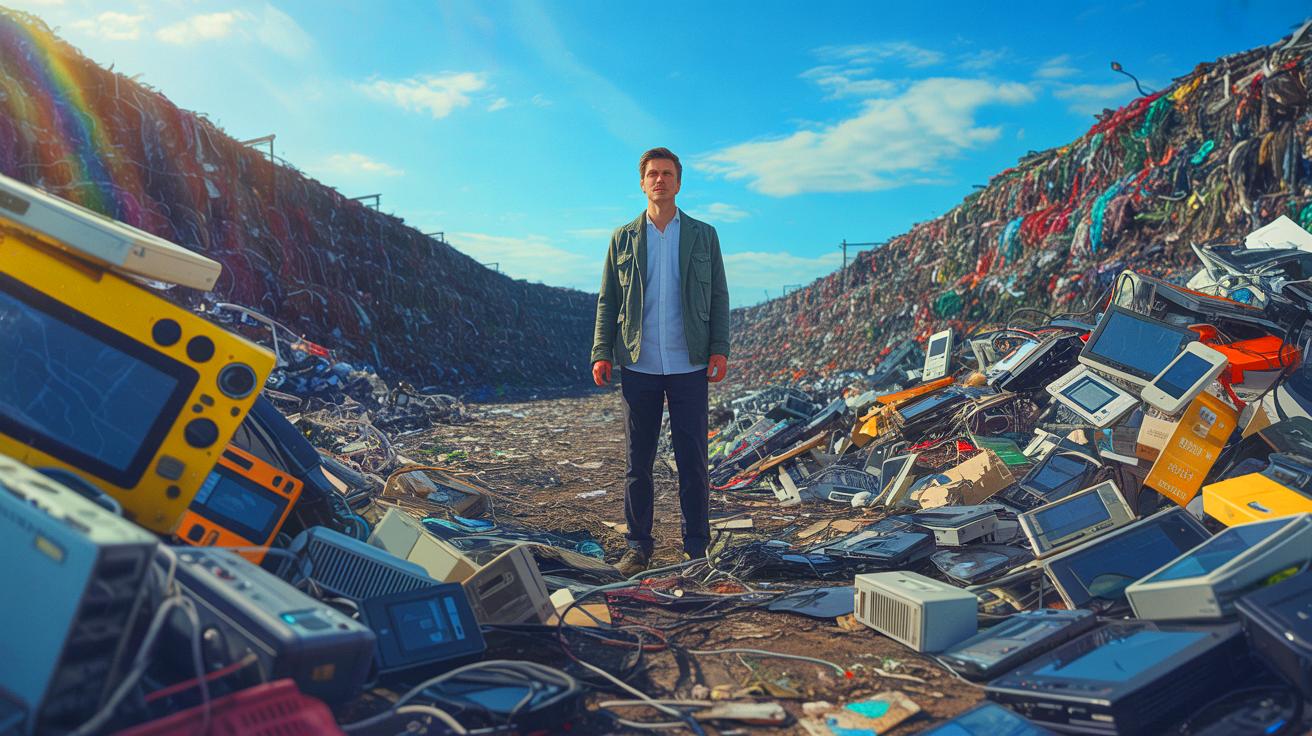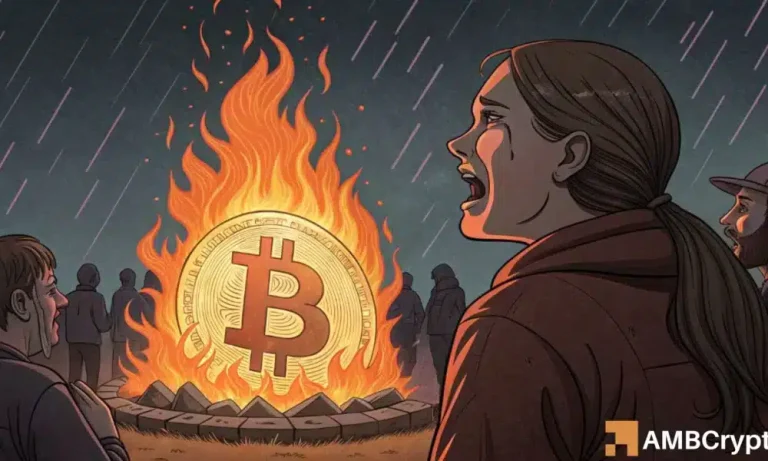| IN A NUTSHELL |
|
The remarkable journey of James Howells, a Welsh IT professional, underscores the unpredictable nature of digital fortunes. In 2013, Howells inadvertently discarded a hard drive containing 8,000 Bitcoins, now valued at approximately $742 million. Despite twelve years of relentless searching, legal battles, and ambitious technological plans, he has been forced to abandon his quest. However, this compelling narrative is about to be chronicled in an upcoming documentary, promising to capture the imagination of audiences worldwide as it explores the intersection of human error and digital currency volatility.
An Ordinary Mistake with Extraordinary Consequences
In 2013, James Howells, then merely an IT technician in Newport, Wales, made a mistake that would forever alter his life. While cleaning his office, he accidentally threw away a hard drive containing the private key to his Bitcoin wallet. At the time, Bitcoin was relatively unknown, valued at just a few hundred dollars per unit. What seemed like a trivial mistake soon transformed into one of the most significant financial mishaps of the digital age.
Over the years, the value of Bitcoin skyrocketed. Howells’s 8,000 Bitcoins, initially worth around $8 million, are now appraised at an astounding $742 million (about 649 million euros). The realization was swift and harsh: a minor oversight had morphed into a personal catastrophe and a global symbol of the precariousness of digital wealth.
Determined to recover his hard drive, Howells devised plans that seemed straight out of a sci-fi movie. He proposed using AI-equipped drones and robots to sift through the Newport landfill while minimizing environmental impact. Despite being willing to fund the operation himself, he faced insurmountable administrative barriers. The city council staunchly denied access to the site, citing significant ecological risks such as the potential release of toxic gases or contamination of groundwater.
British legislation further complicated matters. Any item discarded in a landfill legally belongs to the site, and excavation is strictly regulated. Despite his persistence, Howells’s appeals were repeatedly dismissed. In 2024, a British judge concluded that his chances of success were negligible, largely due to the likely deterioration of the hard drive after more than a decade buried under tons of waste.
The End of a Dream, the Birth of a Legend
Confronted with a legal dead end, James Howells officially conceded defeat in his quest. What began as a simple mistake evolved into a case study on the perils of dematerialized wealth and the volatility of cryptocurrencies. Yet, the saga does not end there.
Howells’s misadventure is set to be immortalized on screen. An American production company, LEBUL, has secured the rights to create a documentary series titled “The Buried Bitcoin: The Real-Life Treasure Hunt of James Howells.” Slated for release in late 2025, the project promises to employ stunning special effects to recreate the Welsh IT technician’s journey, from his technological aspirations to his legal challenges.
For James Howells, the film offers a platform to share his story with a global audience. “This is the first time I can truly show what we aimed to do at the landfill site,” he states, asserting, “I am not giving up the fight.”
James Howells’s story serves as a cautionary tale in an era where fortunes are increasingly becoming digital. The loss of a single digital key can obliterate lives and dreams. Yet, it also showcases human resilience in the face of adversity and the ability to turn a failure into a universal narrative. The digital treasure hunt in Newport may not have yielded its bounty, but it has already established itself as a modern legend.
Technological Ambitions and Environmental Challenges
James Howells’s plans to retrieve the lost Bitcoins were as bold as they were innovative. Envisioning a high-tech rescue operation, he sought to deploy drones and robots equipped with artificial intelligence to scour the Newport landfill. His approach aimed not only to recover the hard drive but also to mitigate environmental damage by reducing the ecological footprint of the search.
However, these ambitious plans clashed with environmental regulations and concerns. The Newport City Council raised substantial objections, emphasizing the potential hazards associated with disturbing the landfill. The risks included the release of toxic gases and possible contamination of local water sources. These environmental concerns proved to be significant barriers to Howells’s technological endeavors.
Despite these challenges, Howells remained committed to his vision. His proposals demonstrated a deep understanding of both the technological and environmental aspects of the task at hand. He sought to balance the need for innovation with the responsibility of environmental stewardship. Yet, the legal and environmental hurdles proved too formidable, underscoring the complexities of navigating modern technological challenges within a framework of regulatory and ecological constraints.
A Story of Resilience and Transformation
Beyond the financial implications, James Howells’s journey is a testament to human resilience and the power of transformation. His relentless pursuit of his lost fortune reflects a deep-seated determination to overcome adversity. The narrative of a digital treasure hunt has captivated global audiences, resonating as a modern allegory of loss, perseverance, and adaptation.
The upcoming documentary promises to explore these themes in depth, offering viewers a window into Howells’s world. It will highlight the intersection of technology, law, and personal resolve, painting a vivid picture of one man’s quest against overwhelming odds. The film is poised to inspire audiences, showcasing the potential to turn personal setbacks into compelling narratives.
James Howells’s story is not merely about a lost fortune; it is about the human capacity to endure and reinvent. As the world continues to grapple with the implications of digital currency and technological advancements, Howells’s journey serves as a poignant reminder of the challenges and opportunities that lie ahead.
The tale of James Howells is a fascinating exploration of the intersection between technology and human error. It challenges us to consider the implications of our increasingly digital world, where fortunes can be lost with a single mistake. How will future generations safeguard their digital assets against such unforeseen losses?
Our author used artificial intelligence to enhance this article.
Did you like it? 4.6/5 (20)










